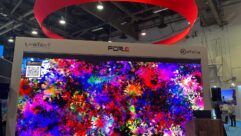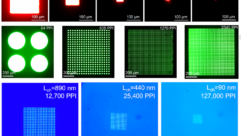
A team at MIT led by Associate Professor Jeehwan Kim has developed a technique that allows them to create a micro-LED display with triple the amount of pixels than a traditional display utilizing micro-LED technology.
Traditionally, micro-LED pixels, like OLED pixels, are made up of three sub-pixels (a red, a green, and a blue) arranged side by side. By illuminating each sub pixel at different intensities, a full spectrum of color is able to be generated. However, while micro-LED displays are claimed to be more effective for many uses than OLED, micro-LED pixels are not able to be distributed as densely as OLED pixels, resulting in a lower resolution.
See also: LG’s 2023 OLED TVs to support DTS audio codecs
This is where the MIT team comes in. Instead of arranging three micro-LED sub-pixels side by side, the team has developed a way to stack them on top of each other vertically. Utilizing ultra-thin LED membranes, the sub-pixels are stacked in layers to create a pixel that is only 4 microns wide. By cleverly stacking the sub pixels in a specific order (red at the bottom, then green, then blue on top) to take advantage of each color’s band gap, the team has created a stacked pixel where a full color spectrum can still be created.
Co-author of the study Jiho Shin explained the process to New Atlas:
“The color of light emitted by an LED depends on the LED’s band gap – blue LEDs have the widest band gap and red LEDs have the smallest. A material will not absorb light with energy smaller than the band gap, so red and green light will penetrate through the blue LED layer unabsorbed, which is why we stack these layers vertically in the order of R (bottom), G (middle), B (top).”
The result is a much more space-efficient micro-LED pixel, allowing triple the amount of pixels to be squeezed in to a given surface area, eliminating micro-LED’s resolution issue as compared to OLED technology.
A paper has recently been published in in the journal Nature that documents the research.










